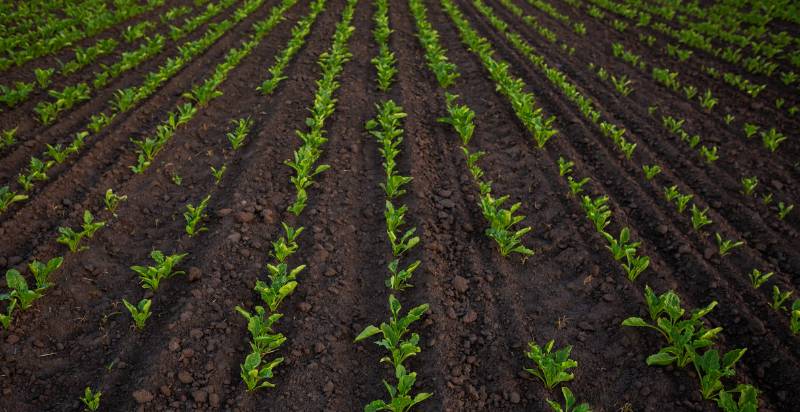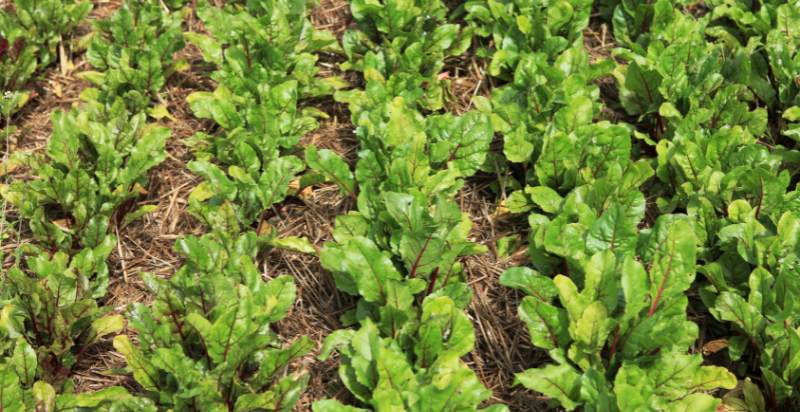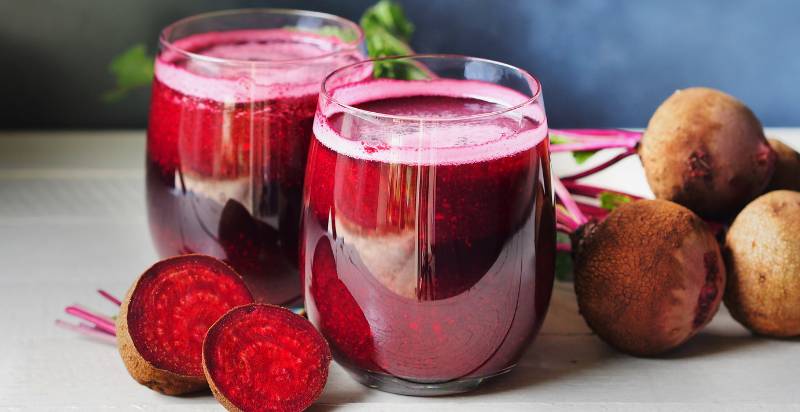Beetroot is a root vegetable, usually deep red in color and round or oval. It’s an ancient crop with origins dating back to the Roman era, but its use has spread across much of the world through modern times. Beetroots are nutritious and have many health benefits when consumed regularly.
Beetroot is an incredibly versatile and nutritious root vegetable that can be used in a variety of dishes. It is also relatively easy to grow, as long as you provide the right conditions for it. In this article, we will discuss how to plant beetroot so that you can enjoy homegrown beets!
What is Beetroot?
Beetroot is a root vegetable. It’s also known as red beet, table beet, garden beet, and by its Latin name, Beta vulgaris. The color of the outer skin can range from deep red to yellow or white, depending on the variety. The inner flesh ranges from dark red to pink or yellow. Beetroots are most commonly eaten boiled, roasted, or raw in salads.
History of Beetroot:
Beetroots were first cultivated in ancient Rome and have grown since the Roman Empire’s times. In modern times, beetroot is most popular in Europe and North America. It makes various dishes such as soups, salads, and juices. Beetroot has also gained popularity as a natural food colorant and is used in several products such as jams, jellies, and chocolates.
Types of Beetroot:
There are several varieties of beetroot, which vary in shape and color. The most common type is the Red Beet, which is round or oval with dark red flesh. There’s also the White Beet, which has light-colored flesh that ranges from yellow to white. Other varieties include the Chioggia Beet (also known as the Candy Cane beet), which has concentric circles of red and white flesh, and the Golden Beet, which is yellow.
Nutritional Value of Beetroot:
Beetroots are very low in calories yet high in nutrients and fiber. A single cup of cooked beetroot contains just 58 calories, 2 grams of protein, 13 grams of carbohydrates, and 3 grams of fiber. Beetroots also contain essential vitamins and minerals such as vitamin C, folate, potassium, magnesium, iron, and phosphorus.
Health Benefits of Beetroot:
Beetroots have been associated with a wide range of health benefits. They’re high in antioxidants which can help protect the body from damage caused by free radicals. Beetroots are also known to help reduce inflammation, improve blood flow, and lower blood pressure. Additionally, they may play a role in reducing the risk of certain cancers and promoting healthy digestion.
How to Plant Beetroot?
Beetroots are a delicious and nutritious vegetable easily grown in most gardens. They come in wide varieties, including red, yellow, white, and even striped! Planting beetroot is a fun and rewarding gardening activity that will yield tasty results.
Planting Of Beetroot:
Beetroot seeds should be planted at least one inch (2.5 cm) deep in well-draining, fertile soil with a pH between 6 and 7. Plant the seeds about an inch (2.5 cm) apart, spaced in rows six to eight inches (15-20 cm) apart from each other. The seeds should be kept moist until they sprout, which should take about two weeks.
Weeding Of Beetroot:
Once the beetroots have sprouted, keeping the area free of weeds is important. This can be done by hand or with a hoe. Care should be taken not to disturb the roots of the beetroots while weeding, as this can damage them.
Once the beetroot is harvested, it can be used in many dishes or enjoyed raw. Roasting and boiling are two popular methods for cooking beetroots to bring out their sweet flavor and tender texture. Be sure to enjoy the fresh harvest of your home-grown beetroots!

How to Care for Beetroots?
Here are some tips for caring of your beetroots:
Soil Requirements:
Beetroot does best in soil rich in organic matter and full of nutrients. To ensure a healthy crop, you can add compost or other organic material to the soil before planting. The soil should also be slightly acidic with a pH between 6.0 and 6.5 for optimal results.
Seeds or Seedlings:
There are two ways to approach planting beetroot: from seed or seedlings. If you choose to start with seeds, it is best to sow them directly into the soil in early spring when the soil is still cool. Make sure to space the seeds about 4 inches apart and cover lightly with 1/4 inch of soil.
If you choose to plant seedlings instead, dig a small hole for each one and ensure that the root system fits into it comfortably. Cover them lightly with soil and water thoroughly after planting.
Water Requirements:
Beetroot needs plenty of water during its growing season, so make sure you keep the soil moist but not soggy. During hot summer days, beets may need an extra drink. As a rule, you should water your beet plants once or twice weekly to keep them happy and healthy.
Fertilizing:
Beetroots benefit greatly from fertilizing. A balanced fertilizer like 10-10-10 or 5-5-5 should be applied around the plants at least once during the growing season. For extra nutrition, you can also use compost tea as an organic alternative to chemical fertilizers.
Weeding:
Beetroots don’t compete well with weeds, so keeping the area around them weed-free is important. Hand weeding is usually enough, but if you have a larger patch of beetroots, you may need to use a hoe or other weeding tool.
Pest Control:
Beetroots are relatively resilient and are not plagued by many pests. That being said, aphids and root maggots can still cause damage to your crop if left unchecked. If you notice any pests on your plants, use an insecticidal soap or neem oil to eliminate them.
These are the basics of how to plant beetroot. With a little care and attention, you can enjoy delicious home grown beets in no time.

Preventions From Pests And Diseases:
Beetroot plants can be vulnerable to pests such as aphids, flea beetles, and leaf miners. To prevent the infestation from occurring, it is important to keep the garden clean by removing weeds and debris regularly. Additionally, using organic insecticides or neem oil can help combat any pest problems that may arise.
Beetroots are also susceptible to diseases caused by fungi or bacteria. To reduce this risk, use mulch around the base of the plant to maintain soil moisture and limit contact with the soil. If your beetroots appear sickly or discolored, it is important to remove them immediately so as not to spread the disease throughout your garden.
How to Harvest?
Beetroot is usually ready for harvesting when they are about 2-3 inches (5-7 cm) in diameter. The leaves and stems should be cut off at the base and gently pulled out of the soil. Beetroots can also be left on the ground for storage after harvesting, but keep them covered from direct sunlight and heat. Once removed from the ground, beetroots can be used fresh or stored later.

How To Store?
Once harvested, beetroots can be kept on the ground for storage as long as they are protected from direct sunlight and heat. If storage on the ground is not an option, you can store them in a cool, dry place for up to several weeks. Be sure to check them regularly for signs of spoilage and discard any that have gone bad.
Some Additional Tips For Growing Beetroot:
Beetroots are easy to grow and care for. However, there are a few tips that can help ensure success. Here are some additional tips for growing beetroots:
- Plant your seeds in rows at least 6 inches (15 cm) apart to allow the plants enough room to spread out.
- Keep weeds and debris away from the plants, as they can harbor pests and diseases.
- Fertilize regularly with a balanced fertilizer every two to three weeks.
- Water deeply and infrequently, ensuring the soil is moist but not soggy.
- Harvest when the beets are 2-3 inches (5-7 cm) in diameter, then store them in a cool, dry place for up to several weeks.
- Monitor your plants regularly for signs of pests or disease and take the necessary steps to remedy them.
With these tips, you can easily grow healthy and abundant beetroot crops in your backyard! Have fun growing!
How To Store Homegrown Beetroot?
Once harvested, beetroots can be kept on the ground for storage as long as they are protected from direct sunlight and heat. If storage on the ground is not an option, you can store them in a cool, dry place for up to several weeks. Be sure to check them regularly for signs of spoilage and discard any that have gone bad. Enjoy your fresh home-grown beetroots!
How To Prepare Homegrown Beetroot?
Beetroots are incredibly versatile vegetables that can be cooked in many different ways. Here are some tips for preparing home grown beetroot:
- Scrub the beetroots gently under running water before cooking or eating raw.
- For roasting or boiling, trim the greens and roots before cooking.
- If eating raw, dice or grate the beetroot into salads or slaws.
- Boil them until they are tender, then mash them with butter and seasonings for a delicious side dish.
- Roast in the oven with spices or olive oil for a crispy snack.
- Use in soups and stews to add color and flavor.
With these tips, you can make delicious meals using your homegrown beetroots! Enjoy!

How To Preserve Homegrown Beetroot?
If you have an abundance of fresh beets, you can store and preserve them for later use. Here are some tips for preserving homegrown beetroots:
- Beetroots can be pickled in vinegar or brine. Submerge the cleaned beets in liquid and store them in a cool, dry place.
- Freeze the cooked beets by blanching them before placing them in freezer-safe bags or containers. Frozen beetroots will last up to one year.
- Dry the cooked beets using a dehydrator or oven. Once dried, they can be stored in airtight containers for up to six months.
Potential Risks From Beetroots:
Beetroots are generally considered safe to eat when prepared and cooked properly. However, consuming large amounts of beetroots can cause stomach upset due to their high oxalate content. Additionally, beets may interact with certain medications or medical conditions, so always talk to your doctor before adding them to your diet.
Finally, some people may experience an allergic reaction after eating beets, so take care if you are prone to allergies. Enjoy your home-grown beetroots responsibly!
Conclusion
Growing beetroots at home is a great way to enjoy fresh and flavorful produce year-round. With these helpful tips, you can easily grow healthy and abundant crops of beets in your backyard and store them for later use. Enjoy the freshness and flavor of homegrown beetroots!
Finally, always take precautions when consuming large amounts of beets, as they may interact with certain medications or medical conditions. Have fun growing!
- Everything You Wanted to Know About Red Tamarillos - June 2, 2025
- A Guide to Tulips: Everything You Need to Know & More… - June 2, 2025
- Guanabana: Description, Flavor, Benefits, And Uses - May 27, 2025

6 thoughts on “What is Beetroot? How to Plant, Grow, and Harvest Beets”
Comments are closed.